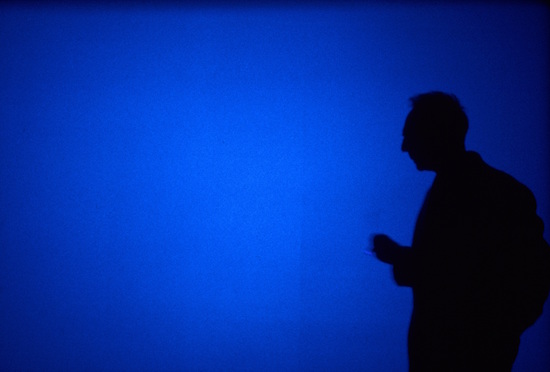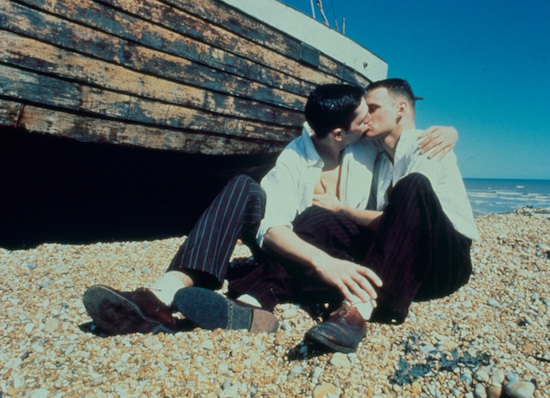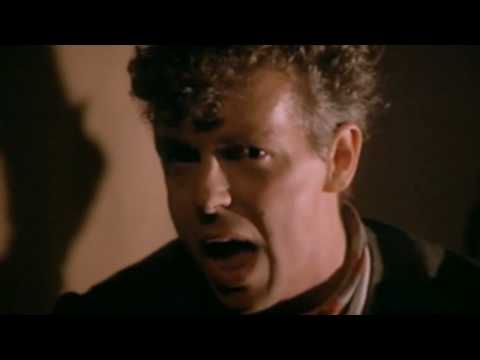Sometimes I find myself staring idly at pictures of a garden. It’s not a normal garden but appears to be more like an alien world. There’s a strange array of plants, shingle, driftwood sculptures, metallic debris of all sorts, a cabin painted black with tar, a nuclear power station on the horizon and, most importantly, no fence. It just goes on as far as the eye can see.
The garden is of course that of Derek Jarman’s Prospect Cottage in Dungeness. I find it fascinating, not so much from a horticultural point of view, but in what it says about the artist himself. It’s as if he left behind the most intimate of personal self-portraits, even mantras, when he passed away on 19th February 1994. Jarman’s garden represents an unusual rebellion which ultimately informs as much about its attendant’s creative thinking as his gardening ability. In between the beauty and the quietude, there is something that matches an English eccentricity with a genuine radicalism; two things which seem almost polar opposite in 2019.
Though born in Middlesex, Jarman’s life was often on the move. After attending boarding school in Dorset, he eventually went to both King’s College and then Slade School of Fine Art in the 1960s. Though initially a painter, a preoccupation that would never leave him, Jarman quickly found his way into the film industry via set-design and homemade super-8 films. He finally made his first fully fledged feature Sebastiane in 1976. From then on, Jarman courted controversy with an array of increasingly dazzling but provocative films. Diagnosed as HIV positive in late 1986, he became a figurehead for gay rights activism, work that sat alongside his filmmaking, writing, increasingly respected abstract painting practice, and of course the garden.
If Jarman’s body of work is considered in its entirety, a sense of opposites becomes palpable. His early paintings, often of picturesque landscapes such as Avebury in Wiltshire, share a common calmness with some of Paul Nash’s eerily empty inverted pastoral works. Yet it was his loudly urban feature films that gained him notoriety, and he was constantly brought out to defend his radical reimagining of cinema within an increasingly conservative society. This was after all an era represented by Mary Whitehouse as much as Margaret Thatcher. Provocation became an art for Jarman, but a very natural one. In this way, he was really showing the responsibility of the artist: to not merely reflect society’s mistakes, but to attack them. Anything outside of that frame was irresponsible, simply not enough.
When the Tory government brought in their repellant Section 28 legislation against the "promoting" of homosexuality in schools, Jarman reacted by celebrating queerness. This was made doubly potent when combined with rage, whether in vibrant filmmaking such as Caravaggio (1986) and The Garden (1990), or in music videos, in particular those he made for the Pet Shop Boys.
Jarman’s work was a statement that conservatism did not, or at least should not, define the perception of Britishness. His vision extended all of the way back to the likes of William Blake, John Dee and Gerard Winstanley, the radicals, mystics and outcasts of English history. His era, on the other hand, looked inwards and pessimistically so. The outward world was solely a free market. Our projected national identity was little else but the retread of colonial fantasies, a faux benevolence to the world that handily discarded the violence and tyranny that built it. Jarman saw through this imaginary landscape, often skewering it in his films.

Even although it acknowledges the collapse of liberal optimism, Jarman’s radicalism never in itself seems indulgently pessimistic. In The Last of England (1987), a film that openly suggests Thatcher’s Britain to be a dystopian bombsite run by thugs, there’s something about its imagery that feels rebellious in a celebratory way, a cathartic release of rage. When Tilda Swinton, adorned in a regal wedding dress, screams as flames lick the Dungeness horizon, it feels oddly optimistic – rage could not even be extinguished by the banal blanket of neo-conservatism. Dealing with the inherent homophobia of the times, The Garden used kitsch elements of gay culture to celebrate and defend its communities from the violence it faced. And in Blue (1993), Jarman still finds beauty as the whole world literally disintegrates into the blind cobalt of his illness.

The film, much like his journals, resists wallowing in the obvious sadness of the situation and bounces right off it. He is biting, enraged, witty, even playful about the pain. He is never less than radical.
In hindsight, Jarman’s death feels like the end of something, in cinematic terms at least. With his controversial debut of Sebastiane, Jarman seems to bookend the revitalising of British Cinema. In the late 1970s, when it was for some was virtually deceased, Jarman paved the way for what could loosely be called the British Film Institute film. Whether in subsequent works by Peter Greenaway, Terence Davies, John Akomfrah or Sally Potter, Jarman’s inspiration changed the landscape of cinema and left it fertile for a new wave of radical filmmaking unafraid to push the boundaries of politics, identity and morality. He was a gardener of the cinematic landscape as much as his own shingly dwelling; making those violent interventions into the ground in the hope of allowing something vibrant to flourish once more. What grew was magnificent.

Yet with Jarman’s death in 1994 that wave of creativity seemed to come to an end – or at least the support that such radical filmmaking had briefly garnered dried up. Greenaway followed the money abroad and began making more theatrical film projects in other countries. Davies, in spite of his array of dazzling Liverpool-based films, ran into more and more financial difficulty, a state only now being reversed. Akomfrah moved to the art gallery and Potter, despite the brilliant Orlando in 1992, made only one other feature film in the 1990s. His spirit lived on in work by the likes of Isaac Julien, Andrew Kötting and Clio Barnard and Francis Lee to name but a few, though the commercial conditions for making independent cinema have barely improved in the last quarter century.
Jarman’s passing represents so much to so many different people, and yet there’s something within his loss that feels like an endpoint for a certain form of British cultural radicalism. This was when figures like Jarman invested time in striving towards an open, daring politics that saw the country, like his garden, without barriers. Jarman himself was scathing about Kenneth Branagh’s Peter’s Friends, for instance, and later in the 90s, England would soon be swallowed by a cinema of affluent myths, a tyranny of Four Weddings visual chintz where the capital was the only city on the map. A new cultural landscape of socially conservative fantasy would come to dominate. We still live in it now.
Jarman’s voice is still much missed but his radical spirit is a blueprint for how to respond to oppression.He knew that the answer was rebellion, loud or quiet; pottering about in his overalls in the garden or causing chaos in the cinema. I imagine him now looking out beyond the plants and rusted metal of Prospect Cottage, a vision which he knew just rolled on towards the horizon, over the sea and beyond, no matter how many fences might be erected on its shifting shoreline.
Jarman Volume Two: 1987 – 1994, a 6-disc Limited Edition Blu-ray box set containing The Last of England (1987) War Requiem (1989), The Garden (1990), Edward II (1991), Wittgenstein (1993), Blue (1993) and Glitterbug (1994), along with 66 extras and a 100-page book, is released by the BFI on 25 February.



